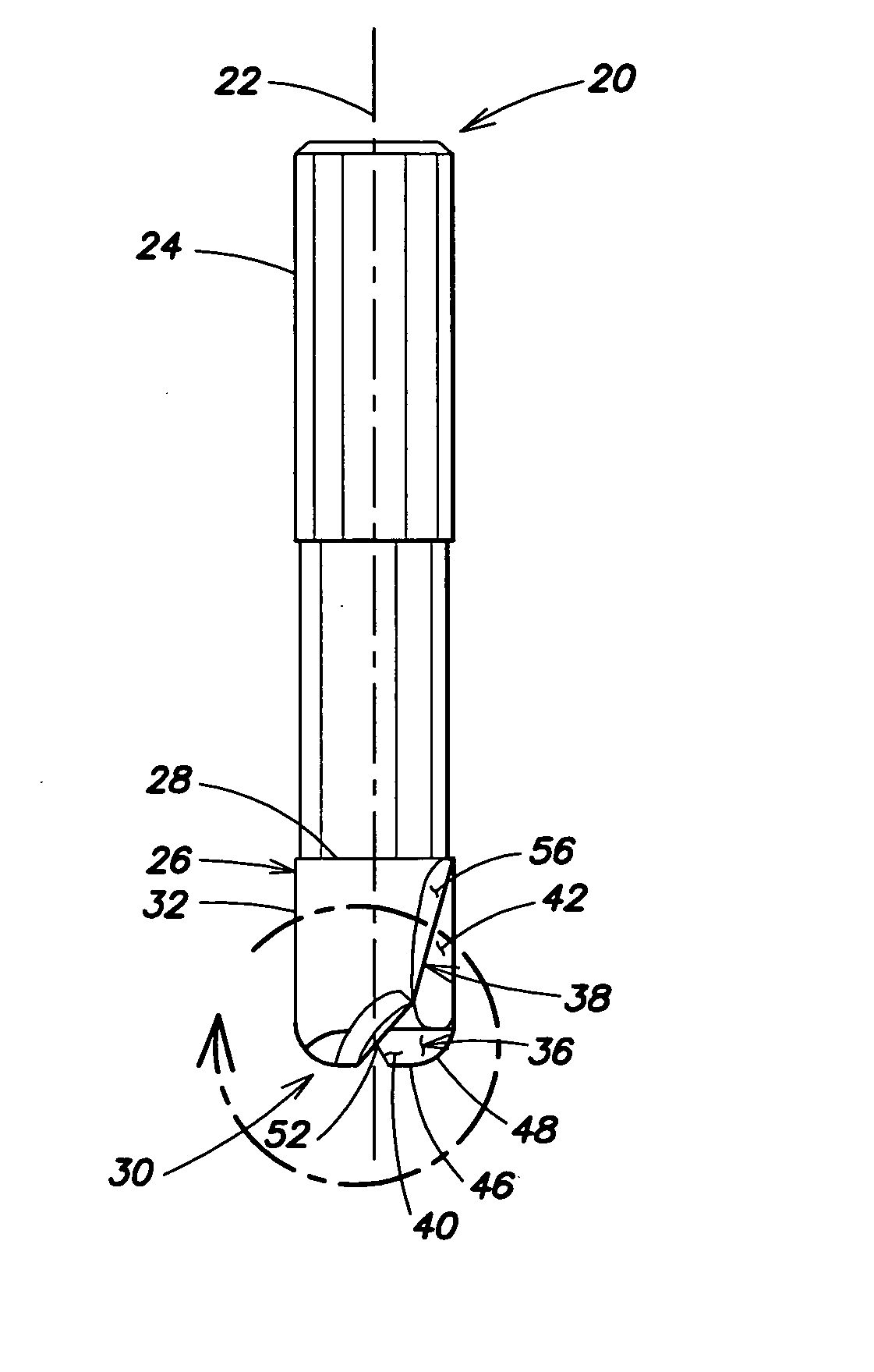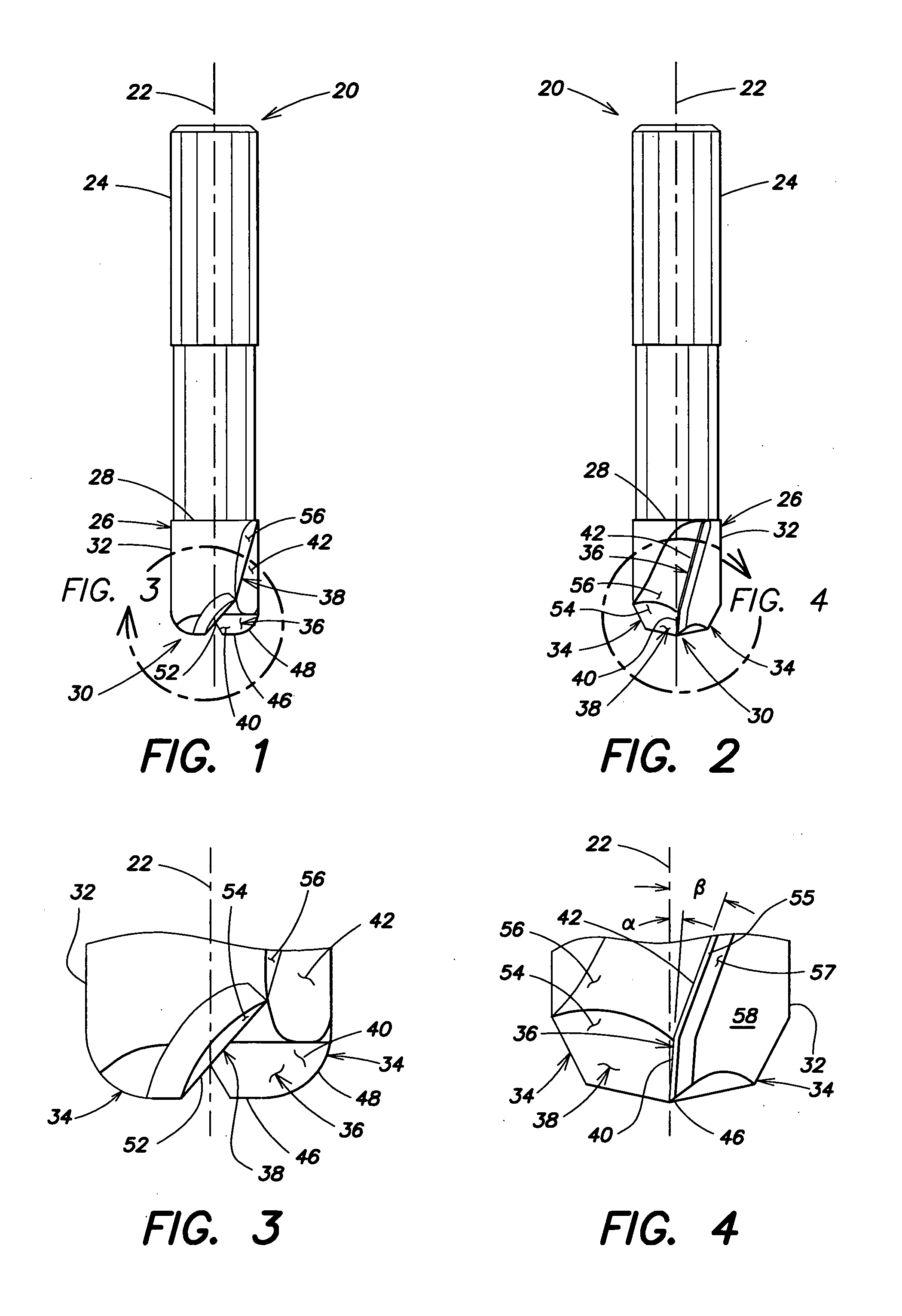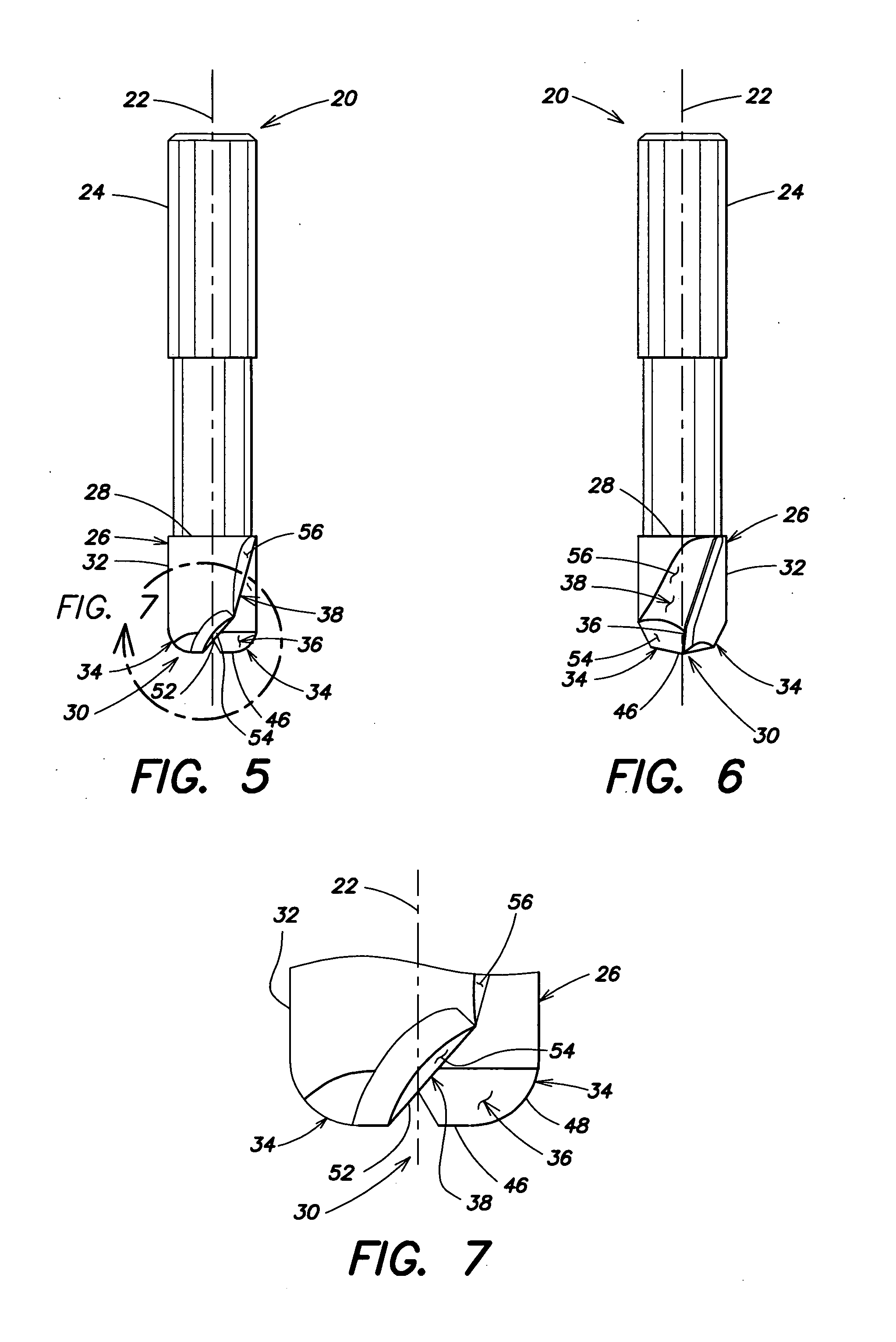Multiple-axis cutting toroidal end mill
a toroidal end mill and multi-axis technology, applied in the field of single-piece toroidal end mills, can solve the problems of increasing tool cost, not being practicable in all applications, and many of the machine tools currently in use, so as to improve the effective machining of machines, reduce horsepower and torque capabilities, and increase the removal rate of cubic inches.
- Summary
- Abstract
- Description
- Claims
- Application Information
AI Technical Summary
Benefits of technology
Problems solved by technology
Method used
Image
Examples
Embodiment Construction
[0029] Referring to FIGS. 1-14, a one-piece toroidal end mill 20 having an axis of rotation 22 is provided. The end mill 20 includes a shank section 24 and a fluted section 26. The shank section 24 extends along the axis of rotation 22. The fluted section 26 extends along the axis of rotation 22, and has a first end 28 integrally attached to the shank section 24, a second end 30 (also referred to as the “tip”) opposite the first end 28, and an outer surface 32. The fluted section 26 includes a plurality of teeth 34. FIGS. 1-14 show embodiments of the present invention end mill 20 having a pair of teeth 34. Alternative embodiments may include more than two teeth 34. Each of the teeth 34 has a cutting surface 36 and a shoulder surface 38.
[0030] The cutting surface 36 extends from the tip 30 toward the shank section 24, between and contiguous with the shoulder surface 38 and the outer surface 32. In some embodiments, the cutting surface is disposed in one plane. For example, FIGS. 5-7...
PUM
 Login to View More
Login to View More Abstract
Description
Claims
Application Information
 Login to View More
Login to View More - R&D
- Intellectual Property
- Life Sciences
- Materials
- Tech Scout
- Unparalleled Data Quality
- Higher Quality Content
- 60% Fewer Hallucinations
Browse by: Latest US Patents, China's latest patents, Technical Efficacy Thesaurus, Application Domain, Technology Topic, Popular Technical Reports.
© 2025 PatSnap. All rights reserved.Legal|Privacy policy|Modern Slavery Act Transparency Statement|Sitemap|About US| Contact US: help@patsnap.com



